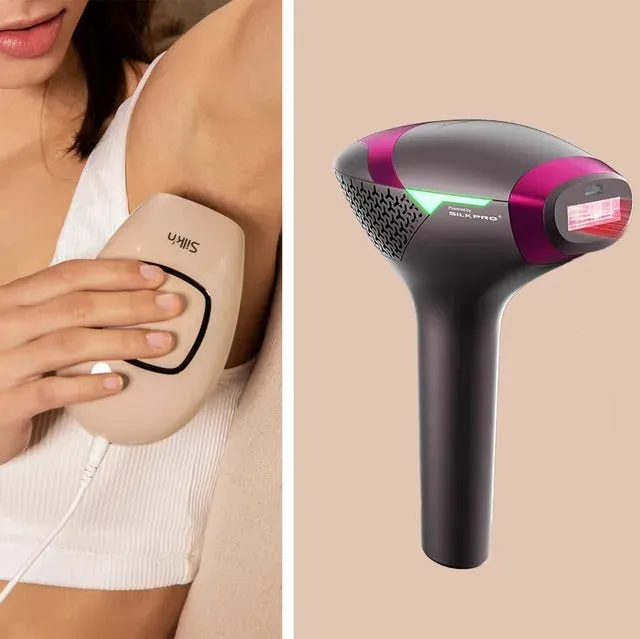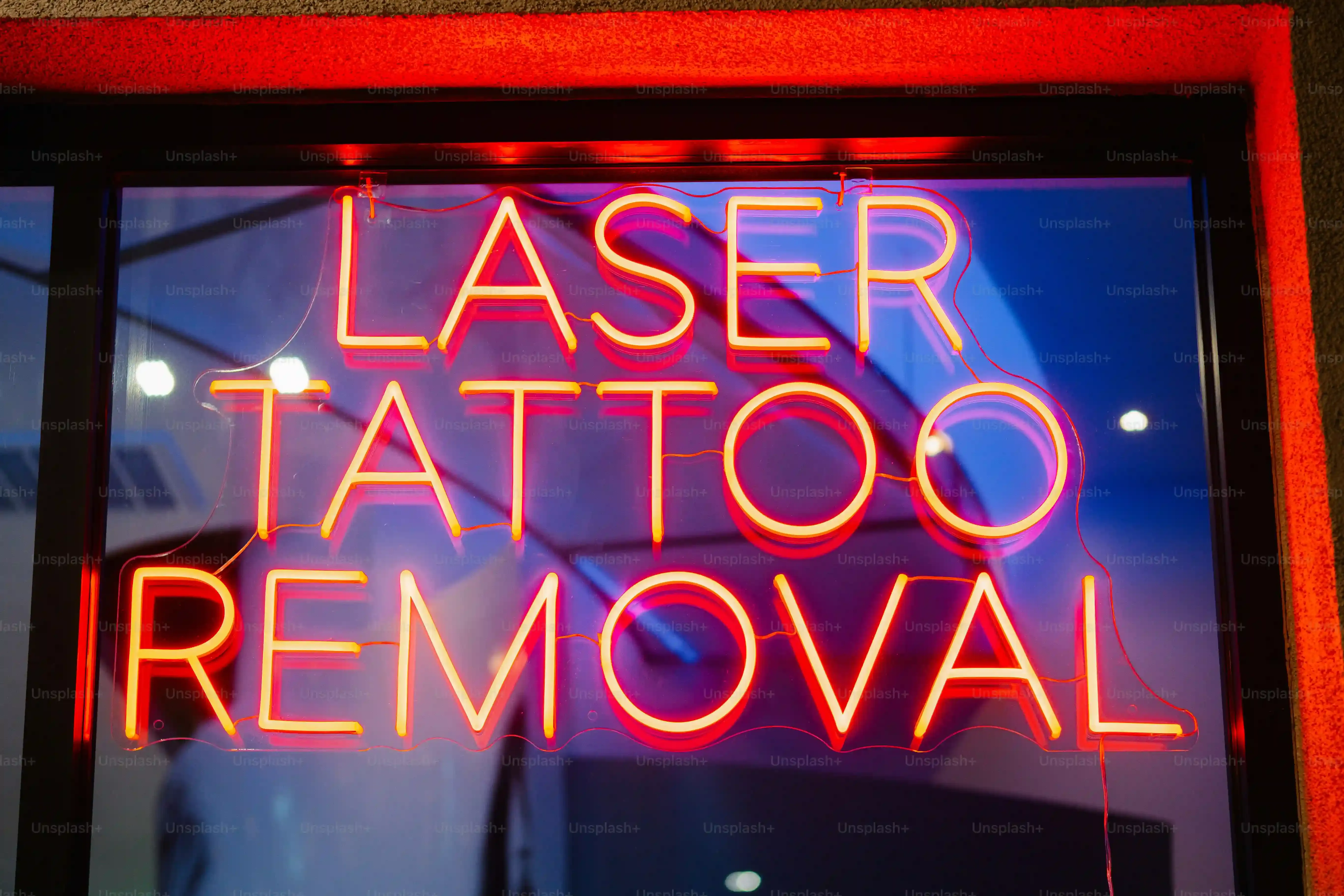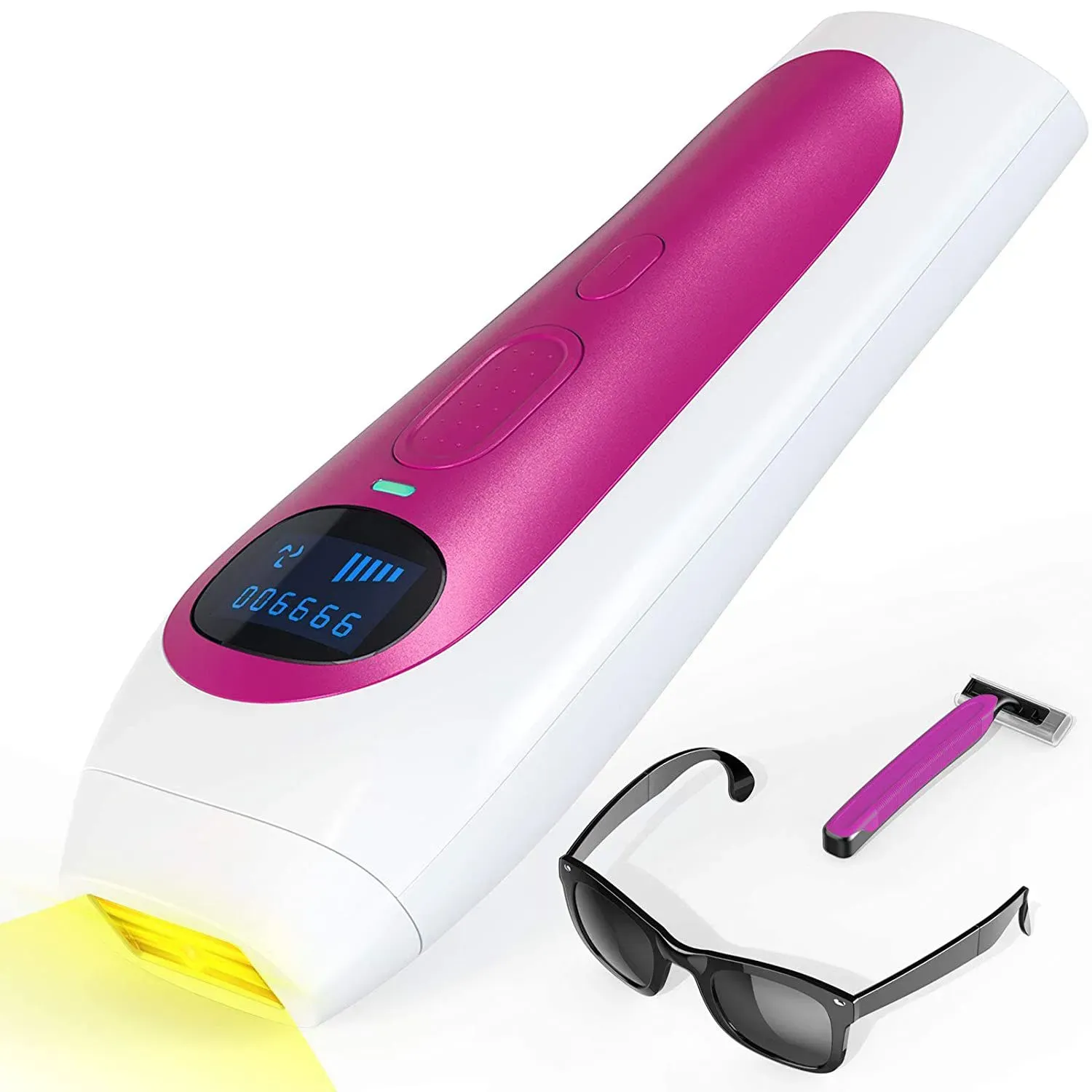Table of Contents
Tired of the endless cycle? Shaving nicks, painful waxing strips, or threading sessions that leave your eyes watering? Yeah, we get it. The constant battle against unwanted hair feels like a part-time job nobody signed up for. You've probably heard whispers about at-home laser hair removal and wondered if it's the magic bullet it claims to be. Can you really get smooth skin without the salon price tag or the weekly razor routine?
Understanding Home Laser Hair Removal: How Does It Actually Work?

Understanding Home Laser Hair Removal: How Does It Actually Work?
Targeting the Pigment: The Core Idea
So, you're wondering how these little gadgets zap away hair? It's not magic, though sometimes it feels like it after weeks of no stubble. The basic science behind most home hair removal devices, whether they use true laser or intense pulsed light (IPL), comes down to targeting pigment. Think of the dark color in your hair follicle. The device sends out a specific wavelength of light that is absorbed by this pigment, called melanin.
When the melanin absorbs this light energy, it gets hot. Really hot, but in a controlled way. This heat travels down the hair shaft to the follicle, the tiny structure under your skin that actually grows the hair. The goal is to damage that follicle enough that it stops producing hair, or at least significantly slows it down and makes the hair much finer and lighter.
Laser vs. IPL: What's the Difference at Home?
here's where it gets a little technical, but it’s important. When people say "home laser hair removal," they're often talking about both true lasers and IPL devices. While they both use light, they aren't exactly the same thing.
True lasers use a single, concentrated wavelength of light. This makes them very precise and effective at targeting melanin. Professional treatments often use true lasers. IPL, on the other hand, uses a broad spectrum of light wavelengths, more like a flashbulb. This light scatters and isn't as focused. While still effective at hitting melanin, it also scatters energy into the surrounding skin, which can mean it's less effective on very dark skin tones where there's more melanin in the skin itself.
Many popular home devices actually use IPL technology because it's generally considered safer and easier for consumer use without extensive training. However, some higher-end home devices are now using diode laser technology, which is a true laser.
Key Differences: Laser vs. IPL
- Laser: Single wavelength, more focused, often more effective on specific hair/skin types, potentially higher energy.
- IPL: Broad spectrum of wavelengths, less focused, covers larger areas faster, generally considered safer for home use on a wider range of skin tones (though still limited).
Why Multiple Sessions Are Necessary
You might think one pass with a home device and you're done, right? If only! Hair grows in cycles. There's an active growth phase (Anagen), a transitional phase (Catagen), and a resting phase (Telogen). The light energy from these devices is most effective on hairs that are in the active growth phase because they are still attached to the follicle and contain the most melanin.
At any given time, only a percentage of your hair is in that active growth phase. The devices can only target those hairs. Hairs in the transitional or resting phases won't be affected as much, if at all. That’s why you need multiple treatment sessions spread out over weeks or months. Each session catches more hairs as they enter their active growth phase. It's a process, not an instant fix.
Think of it like mowing a lawn. You can cut the grass that's visible, but the roots are still there, and more grass will grow. You need to keep mowing regularly to keep it short. Similarly, repeated sessions gradually damage more follicles over time, leading to reduced hair growth.
Choosing Your Device: What to Look for in What is the Best Home Laser Hair Removal

Choosing Your Device: What to Look for in What is the Best Home Laser Hair Removal
Skin Tone and Hair Color Compatibility: The Crucial First Step
Alright, let's talk about the absolute non-negotiable when you're trying to figure out what is the best home laser hair removal for *you*. It all starts with your specific skin tone and hair color. Remember how these devices target pigment? That's why this is so critical. Most home devices, especially the IPL ones, work best on lighter skin tones (think fair to light brown) and darker hair colors (dark blonde to black). Why? Because there's enough contrast for the light to find the pigment in the hair without getting too absorbed by pigment in the skin, which could lead to burns or discoloration.
If you have darker skin tones or very light hair (red, grey, or very light blonde), many standard home devices simply won't be effective or, worse, could be unsafe. Some newer, more advanced devices are coming out with technology that claims to work on a wider range of skin tones, but it's vital to check the device's compatibility chart carefully before buying. Don't just hope it works; verify it's designed for your specific pigment profile.
Device Type, Features, and Energy Levels
Beyond compatibility, the type of device and its features play a big role. Are you looking at an IPL device or a diode laser? IPL devices often have larger treatment windows, meaning you can cover bigger areas like legs faster. Laser devices, while sometimes slower for large areas, can be more precise and potentially more effective on stubborn hairs. Look at the energy levels or intensity settings. More settings allow you to customize the treatment to different areas of your body and your comfort level. Some devices have automatic skin tone sensors, which is a nice safety feature, adjusting the intensity based on the skin it detects.
Consider extra features too. Does it have a cord or is it cordless? Cordless is convenient but might mean less power or shorter treatment times before needing a recharge. Does it come with different head attachments for smaller, trickier areas like the upper lip or bikini line? Think about where you plan to use it most. A device designed for large areas might be awkward for facial hair, and vice-versa.
Key Features to Compare
- IPL vs. Diode Laser Technology
- Treatment Window Size
- Adjustable Intensity Levels
- Skin Tone Sensor
- Corded vs. Cordless Operation
- Specialized Attachments
Treatment Area and Comfort: What Can You Handle?
Let's be real: comfort matters. While many home devices are designed to be less painful than professional treatments, some level of sensation is expected. It can feel like a warm snap or a light rubber band flick. Devices with cooling features, like a built-in ice function or cooling plate, can make a huge difference in managing discomfort, especially on sensitive areas. Also, consider the ergonomics of the device. Will your hand cramp up halfway through treating your legs? A lightweight, easy-to-hold design is surprisingly important for sticking with your treatment schedule.
Finally, think about the specific areas you want to treat. Not all devices are suitable for every body part. Some are explicitly marked for body use only and shouldn't go near your face. Others come with precision heads specifically for facial hair or the bikini area. Ensure the device you pick is approved and designed for the areas you plan to target to ensure both effectiveness and safety. This helps narrow down what is the best home laser hair removal based on your personal needs.
Top Devices Reviewed: Finding What is the Best Home Laser Hair Removal for You

Top Devices Reviewed: Finding What is the Best Home Laser Hair Removal for You
Navigating the Crowded Market: Where to Start
you know the science now – target the pigment, damage the follicle, repeat. Simple enough, right? Except when you start looking at the sheer number of devices out there claiming to be what is the best home laser hair removal. It's like walking into a store aisle overflowing with options, each box shouting promises. Do you go for the sleek, expensive one? The budget-friendly model with a million positive reviews (that might be fake)? The one your friend swears by, even though her hair and skin are totally different from yours?
Sorting through the marketing fluff is the real challenge. Every brand says their device is the fastest, the most painless, the most effective. But the truth is, effectiveness varies wildly depending on the technology used, the energy output, and most importantly, your personal biology – that skin tone and hair color combo we talked about. Finding what is the best home laser hair removal isn't about picking the most popular one; it's about finding the right tool for *your* specific job.
Looking at the Contenders: Features That Matter
When you start comparing actual devices, look past the fancy packaging. Focus on the specs that translate to results and safety. Does it have adjustable intensity levels? A good range means you can start low for comfort and increase as needed (and as your skin adapts). Pay attention to the number of flashes the device is rated for – some have a limited lifespan, while others boast "unlimited" flashes, which is a pretty big deal if you plan on treating large areas long-term. Also, check the size of the treatment window. A bigger window means quicker sessions on legs, but a smaller, precision head is essential for areas like the upper lip or fingers.
Some devices stand out with extra features. Built-in cooling technology is a game-changer for comfort, significantly reducing that warm, zappy feeling. App connectivity, like with the Braun Skin i-expert, can help you track sessions and guide you, which is useful if you're prone to forgetting where you left off. And don't underestimate the corded vs. cordless debate; a corded device usually offers consistent power without worrying about battery life mid-session, while cordless offers freedom of movement. For a reliable source of information and devices, hairawaybylaser.com offers a range of options to consider.
Here are some key features often found in top-rated home hair removal devices:
- Multiple Intensity Settings (5+)
- Skin Tone Sensor
- Cooling Function
- Large Treatment Window
- Precision Attachment
- Long Lifespan (High Number of Flashes)
- Ergonomic Design
Setting Expectations: Real Results and Safety When Using Home Devices

Setting Expectations: Real Results and Safety When Using Home Devices
It's Not a Magic Wand (Sorry!)
Let's pump the brakes on the idea that buying a home laser hair removal device means you'll be instantly and permanently hair-free everywhere with zero effort. That's just not how it works. These devices are designed for *reduction*, not necessarily total elimination for every single hair, forever and ever, amen. Think of it as significantly disabling the hair follicle, making the hair that does grow back much finer, lighter, and slower to appear.
You'll see results, absolutely, but it takes time and consistency. Don't expect to glide the device over your legs once and toss your razor in the trash. It's a process that requires patience and sticking to the treatment schedule recommended by the manufacturer. Manage your expectations upfront, and you'll be far less likely to feel disappointed a few weeks in.
The Long Game: Sessions and Timelines
So, how long does this "process" actually take? Again, it varies by person, device, and the area being treated. But generally, you're looking at multiple sessions, often spread out over several months. Manufacturers usually recommend treatments every week or two initially, then tapering off as hair growth slows. You might start seeing *some* reduction after just a few sessions, maybe 4-6, but significant results usually require 8-12 sessions or even more.
And even after that initial phase, maintenance sessions are often needed every few months to keep the hair at bay. It's a commitment, for sure. If you're someone who forgets to water their plants, remembering to zap your legs every Tuesday might be a challenge. Build it into your routine, like brushing your teeth, or you won't get the full benefit of what is the best home laser hair removal device you chose.
Typical Treatment Timeline (Estimate)
- Initial Phase: 8-12 sessions
- Frequency: Every 1-2 weeks initially
- Maintenance: Every 1-3 months
- First noticeable results: Often after 4-6 sessions
- Significant reduction: Usually after 8-12 sessions
Safety First: Avoiding Ouchies and Oopsies
Using a home device is generally safe when you follow the instructions, but there are crucial rules to live by. Number one: Patch test! Always, always do a small test area on each body part you plan to treat and wait 24-48 hours to see how your skin reacts. This is non-negotiable. Ignoring this step is asking for trouble.
Sun exposure is another big no-no. Avoid tanning before and after treatments, and use SPF religiously on treated areas that will see the sun. Tanning increases the melanin in your skin, making you more susceptible to burns or discoloration from the device's light energy. Don't use the device on irritated skin, over tattoos, or on moles. If it hurts more than a slight snap or feels excessively hot, stop. Your skin will tell you if something isn't right. Listen to it.
Making the Call: Finding Your Best Home Laser Hair Removal Solution
So, we've covered the basics, peeked under the hood of how these devices work, and looked at what makes some stand out from the crowd. Finding what is the best home laser hair removal isn't about spotting one magical gadget that works for everyone, everywhere. It's about understanding your own skin tone, hair color, and treatment goals. It takes patience, consistency, and realistic expectations. These tools are powerful, but they aren't instant-fix wands. You'll need to commit to a treatment schedule. While the journey might take a few weeks to show noticeable results, the potential payoff – smoother skin and less time spent on tedious hair removal – can make the effort worthwhile. Do your homework, consider your needs, and you might just find the device that helps you finally break free from the razor routine.
